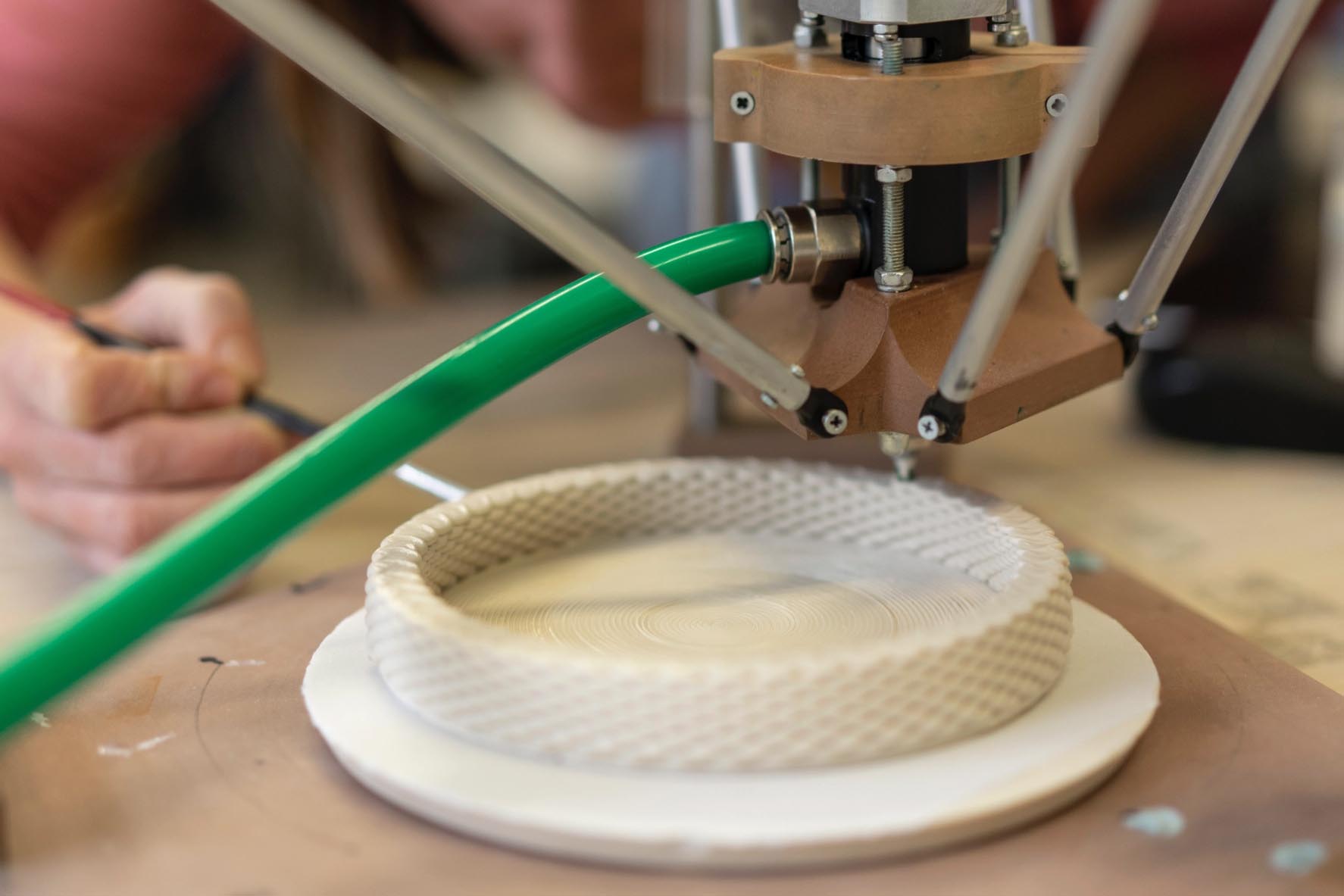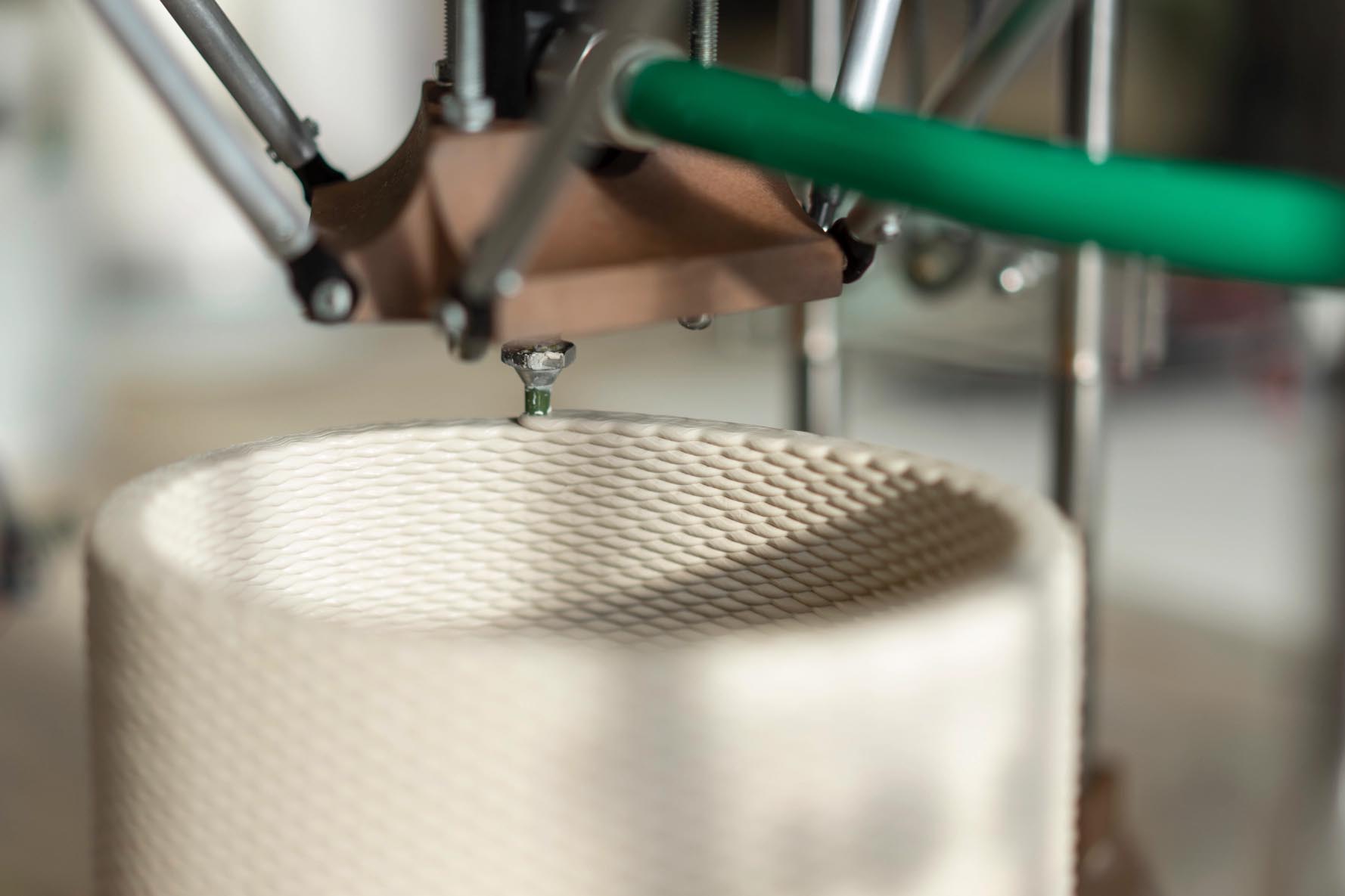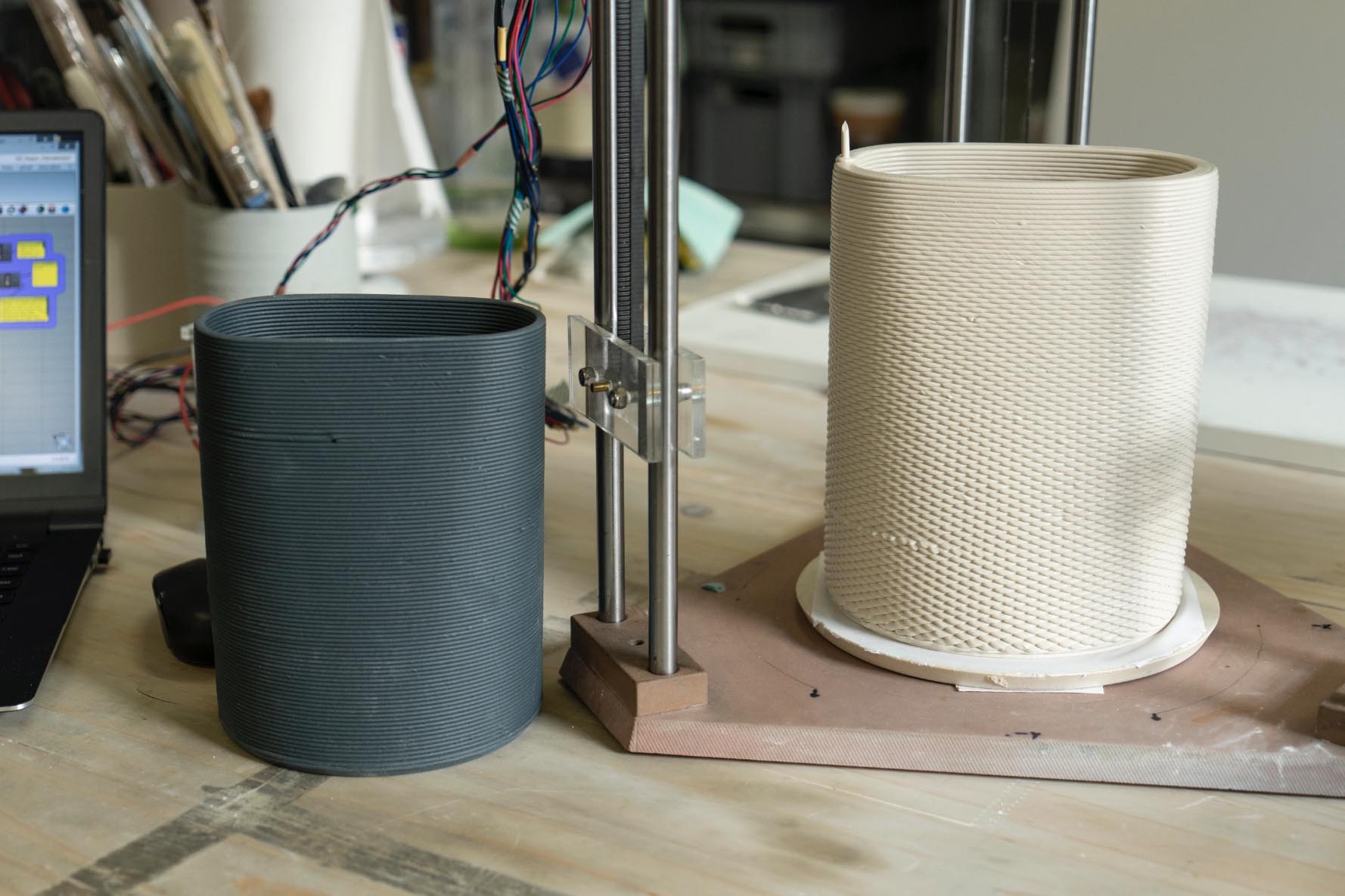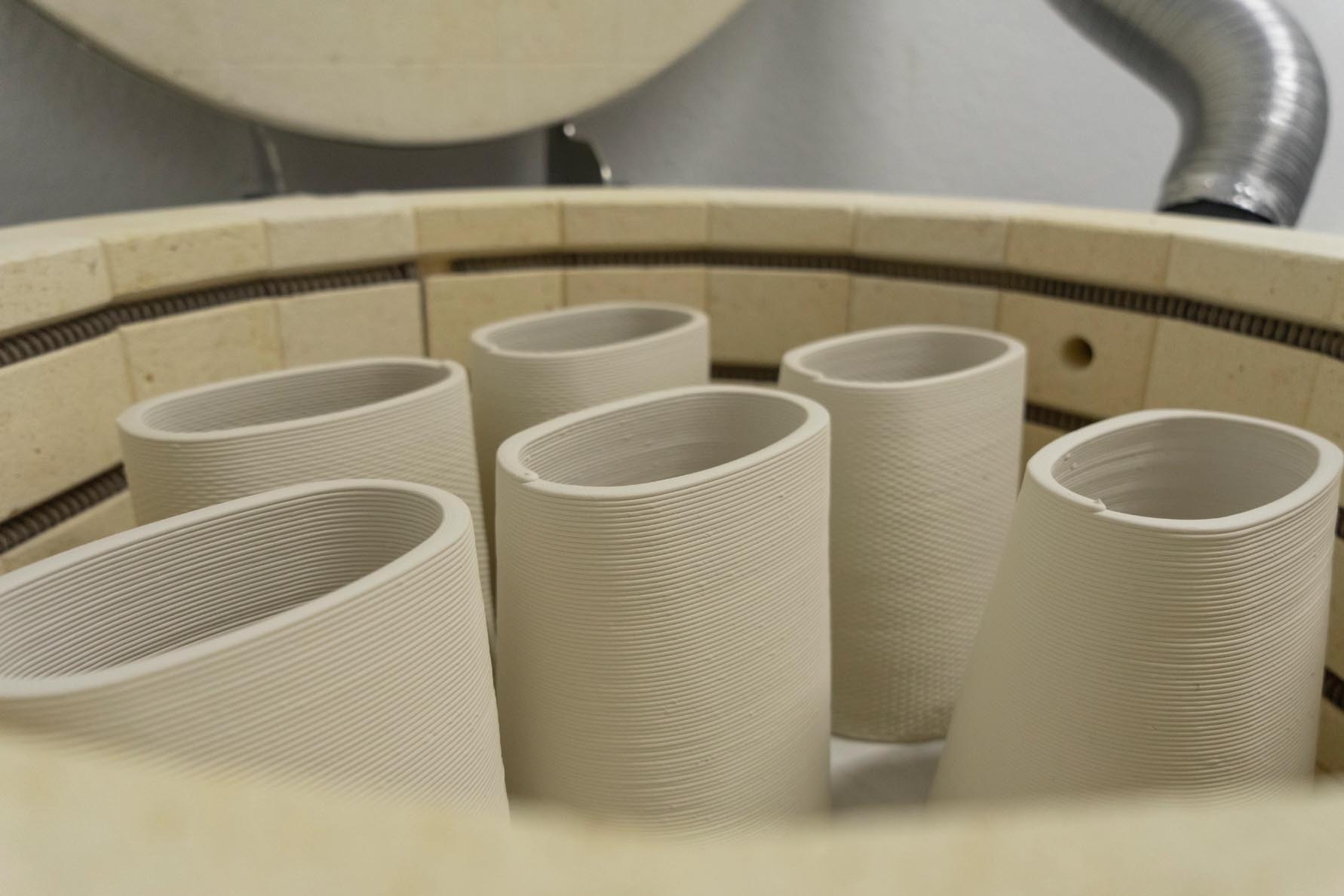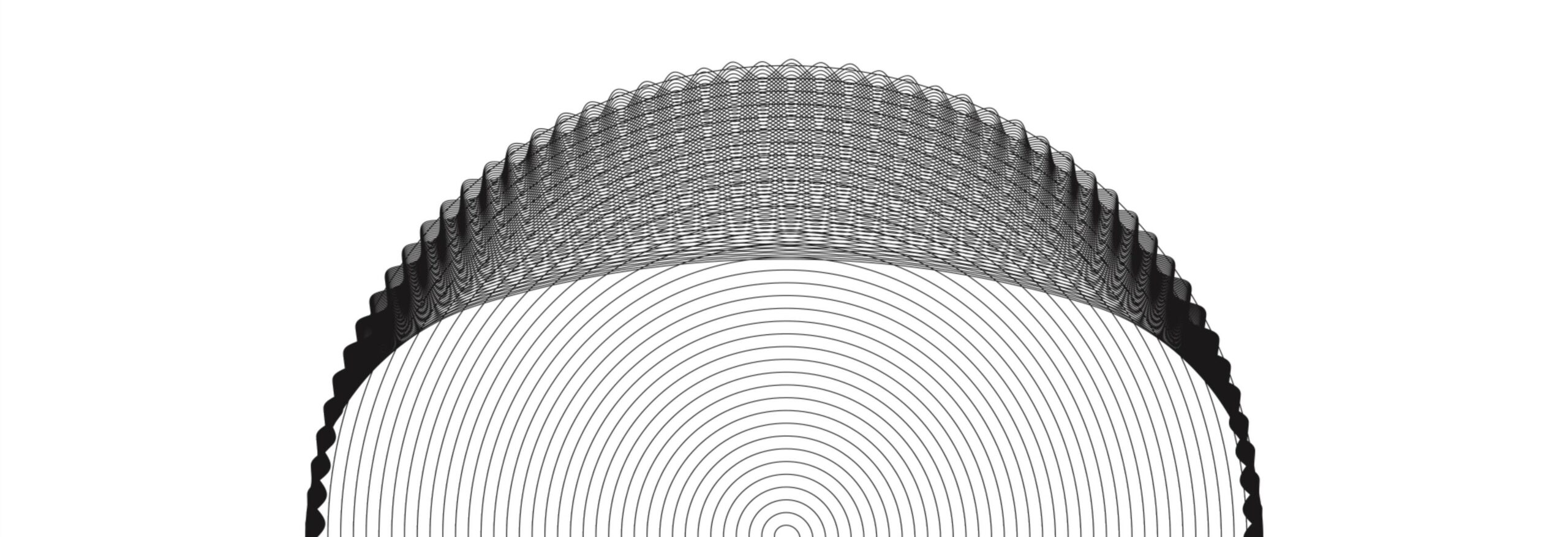Additive Addicted and Make both view 3D-printing as a production process in its own right, not purely a tool for rapid prototyping. Make deliberately designs objects to be printed in low resolution, which speeds up the printing time and removes the need for finishing. There are obvious parallels with pot coiling, and other ancient additive techniques, such as willow weaving, where layers are built up to create structures and covered with natural pastes (e.g. wattle and daub).
Additive construction methods exhibit special qualities due to being built up in layers that grow from the inside out, similar to natural constructions like tree rings, added year on year. Additive production relies on the parameters of time and code. While time is a constant, continuously elapsing in measured intervals, code is the variable. With nature as the designer, genetic code is what defines the process – the DNA of the organism determines its growth pattern. Make by studio 7.5 have generated their own code, deliberately programmed to achieve the designers’ specific aims.
The results
The result is a collection of coiled porcelain vases that are sleek, unique and technically sophisticated. Each piece demonstrates a unique dialog between between code and matter. The ceramic material, guided into form by the code, nevertheless reacts differently to heat in the kiln, where it morphs once again, torn between its own will and the laws of physics.
Variation in the ceramic paste creates a unique and subtle ombré effect. As the coils of coloured material build, layer upon layer, a special, calming visual rhythm emerges. This variation results in one-off pieces, part of a limited edition range that Additive Addicted have produced for Make by studio 7.5.
These vases were designed for functional benefits in use – a wider base was conceived to produce a stable vase, one that is unlikely to tip over, even if flowers with long stems are placed in it. A classic form study, the circular base transitions to an oval, creating a narrowed opening at the top. Flowers and foliage/twigs can be elegantly and simply arranged thanks to this considered vase form; the narrower opening naturally ‘bundles’ a smaller bunch of stems. In a vase like this, they arrange themselves.
Form development
Coming from the world of plastic injection-moulding, Make didn’t approach this design project like a ceramicist would. Their previous explorations of 3D-printing whet their appetite for unconventional forms that break the (proverbial) mold, and so this radical approach informed the design development of this collection of porcelain vessels.
A classic ceramic pot has a round, cylindrical form that tapers down to a small bottom, a flat disc on which it sits. This form is not pure convention, it is also functional, as the symmetry and curve of the vessel adds stability to the structure, and the smaller surface area of the base helps it to remaining intact during firing. Make turn this conventional form upside down, conceiving a vase with a wide, circular base, whose curves flatten as it tapers up towards an oval opening. This ‘simple’ transition of form from circle to oval posed a real technical challenge as the material refused to comply, sparking a battle of wills between the porcelain’s desire to bend and shrink and the will of the designers to align it into this particular form.
A true collaboration
This project enabled Make by studio 7.5 and Additive Addicted to learn a lot from one another’s approaches. Make’s love of form allowed them to fearlessly push the boundaries of what is possible in porcelain; simultaneously they learned how this particular material influences the process and determines the outcome – the constraints are different to realise a design in ceramic compared to plastic, therefore forms achieved in PLA cannot directly be translated to porcelain.
Additive Addicted learned extra skills and techniques by having to negotiate this unusual form design, one which alone they might not have attempted.

